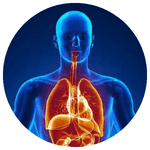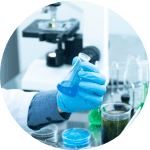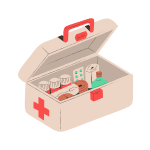B. Pharmacy 1st Semester Handwritten Notes
HUMAN ANATOMY AND PHYSIOLOGY – 1

1- The Study of Structure: Anatomy is like a blueprint of the body. It delves into the names, organization, and relationships of body parts.
Levels of Organization:
* Cells: The smallest living building blocks
* Tissues: Groups of similar cells working together
* Organs: Structures made of different tissues with specific functions
* Systems: Collections of organs working as a team (e.g., the digestive system.
2- The Study of Function: Physiology investigates HOW body parts work, both individually and together.
Key Processes:
* Movement: How muscles and bones help us move.
* Digestion: How the body breaks down food and absorbs nutrients.
* Circulation: How the heart pumps blood and delivers oxygen
* Respiration: How we breathe and exchange gases
* Nervous Control: How the brain and nerves regulate everything.
PHARMACEUTICAL ANALYSIS

What it is:
- A branch of chemistry focused on examining drugs and medicines.
- Involves identifying ingredients, measuring amounts, and ensuring quality.
What it does:
Qualitative analysis: Determines what substances are present in a drug (the active ingredient, impurities, etc.).
Quantitative analysis: Determines how much of a specific substance is in a drug.
Quality testing: Assesses if a drug meets standards for purity, strength, how it dissolves, and its stability over time.
Why it matters:
Patient safety: Ensures medicines are safe, effective, and contain the correct ingredients in the right amounts.
Quality control: Helps manufacturers guarantee their drugs are consistent and meet required standards.
Drug development: Analyzes new drugs during the development process to understand their properties and behavior.
PHARMACEUTICS – 1

Pharmaceutics: introduces you to the captivating science of designing and formulating medications. This course delves into how a raw drug substance becomes a safe and effective tablet, capsule, liquid, or injection.
You’ll discover the variety of ways medicines can be delivered, the role of inactive ingredients (called excipients) in shaping a drug’s form, and how these choices impact how the medication works in the body. Consider Pharmaceutics I as the cornerstone for understanding how a drug transforms from a simple chemical into a powerful tool for healing.
PHARMACEUTICAL INORGANIC CHEMISTRY

What it is:
- A branch of chemistry focused on non-carbon-based elements and compounds used in medicine.
What it does:
- Studies the therapeutic uses of inorganic substances (like minerals and metal-based compounds).
- Analyzes drugs to identify impurities and ensure quality.
- Helps in developing and formulating medicines that may contain inorganic components.
Why it matters:
- Many inorganic compounds have medicinal effects (think calcium for bones or iron for blood).
- Ensures drug purity and safety by detecting and measuring inorganic substances.
- Contributes to the creation of new and improved drug formulations.
COMMUNICATION SKILLS

What are communication skills?
The ability to exchange information and ideas effectively, both verbally and nonverbally. This includes:
Listening: Actively paying attention to and understanding what others are saying.
Speaking: Clearly expressing your thoughts and ideas verbally.
Writing: Communicating effectively through written words, emails, or reports.
Why they matter:
Better relationships: Strong communication builds trust and understanding in personal and professional settings.
Clarity: Prevents misunderstandings and ensures everyone is on the same page.
Problem-solving: Effective communication helps tackle issues constructively.
Success: Good communication skills are essential in almost every job, particularly in leadership roles.